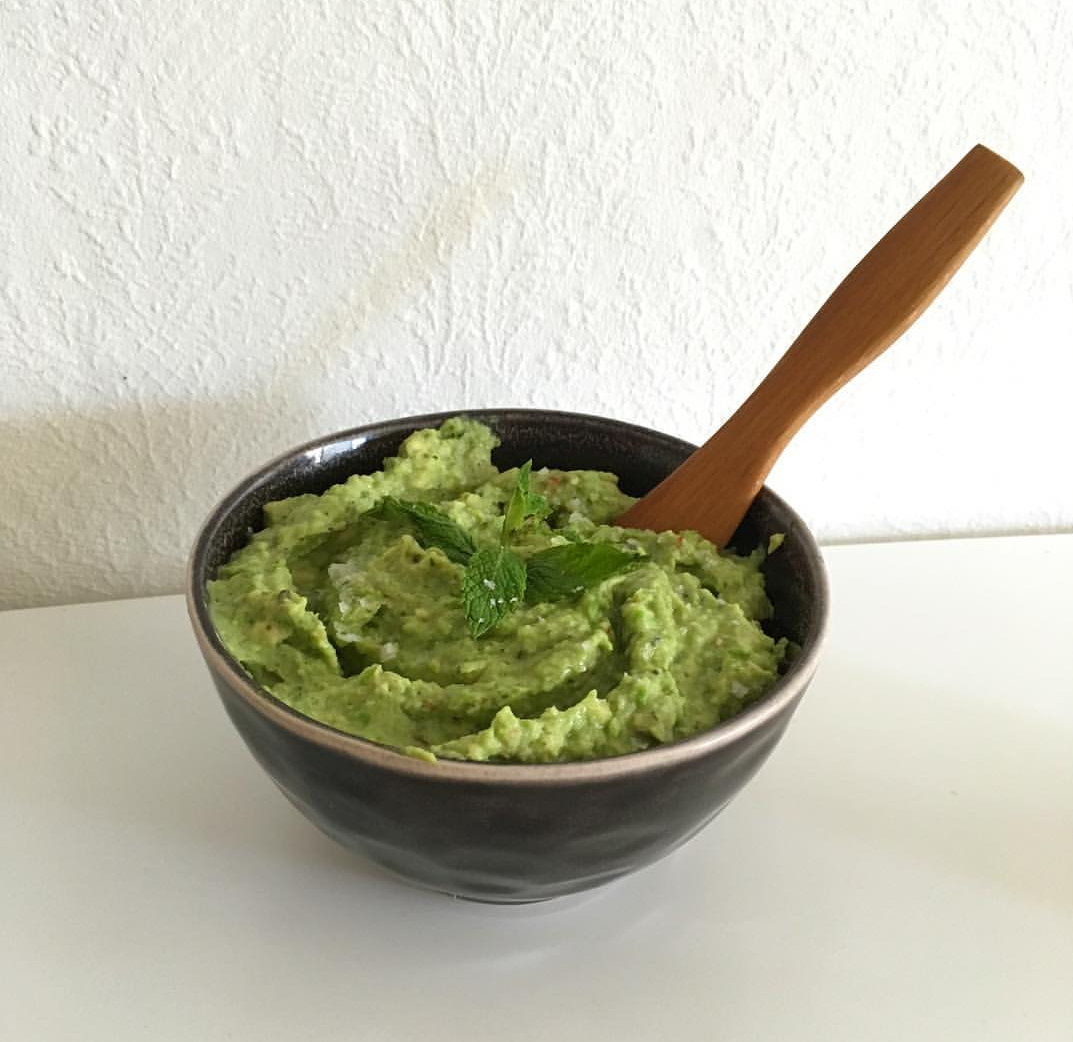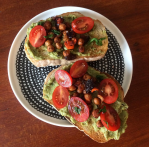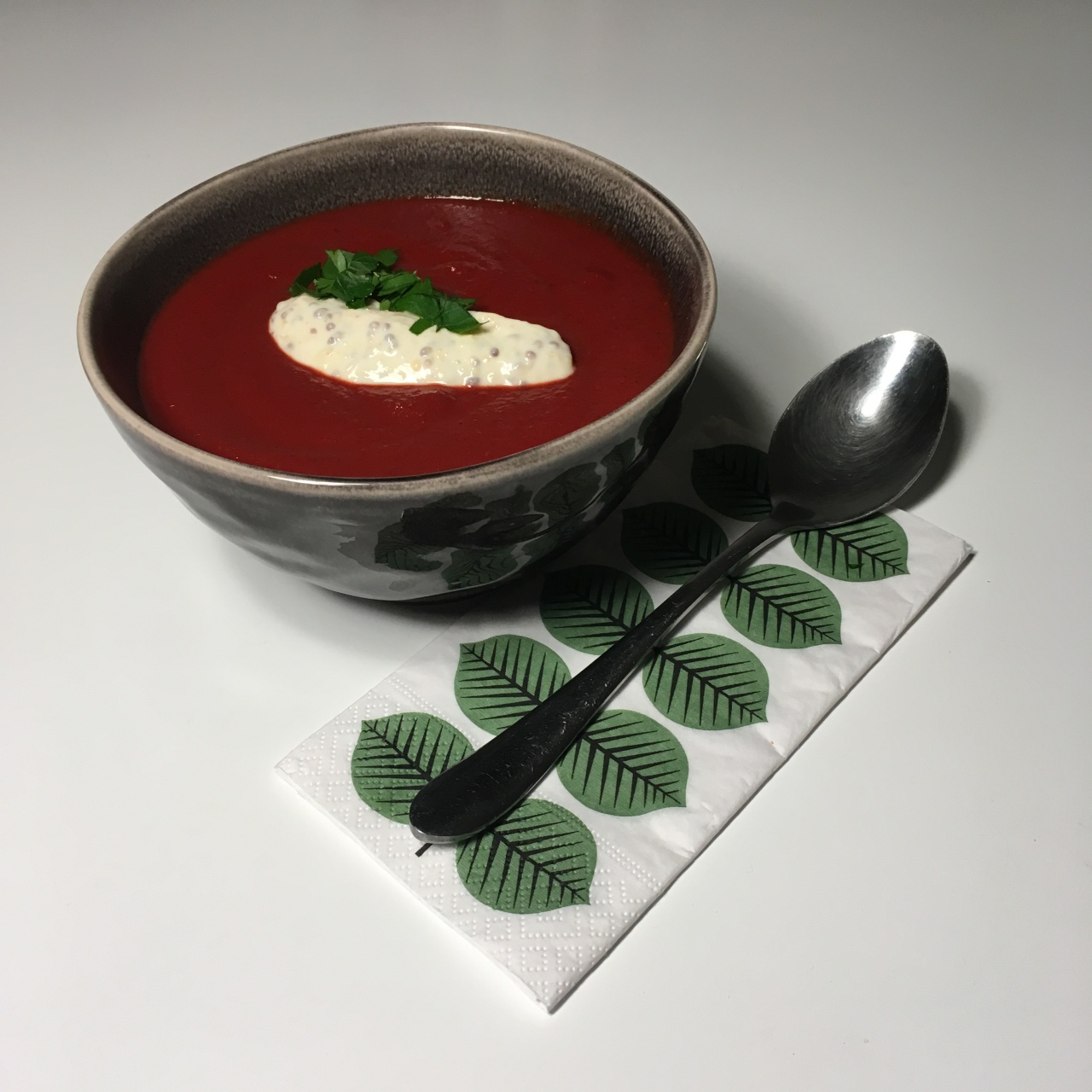New for 2018! I’ve been made the Rude Food Ambassador for the next few months. Rude Food is Sweden’s first food rescuing service and I am lucky that it’s based here in Malmö. They stop perfectly good food from going to waste and promote good food practice to everyone. They usually return the food to the catering world to be used again but in order to help the promotional side of things they have asked me to write two recipes a month using some of their ingredients. Reducing food waste is a massive issue for me, not only for environmental and ethical purposes, but on a practical and economic level too. It just makes sense to make use of what you’ve got, so I’m thrilled to be taking on this role!
This first recipe is for sage roasted parsnips on a bed of meaty green lentils, served with a sour apple purée, blueberry pickled onions, plump sultanas and a sprinkle of fresh sage.,
If you’re wondering, here are the rescued ingredients I was given for this recipe: rescued parsnips, sage, lemons & apples.
Serves 2
Ingredients:
For the stock and the lentils:
600ml of water,
1 regular onion – ½ cut into half rings; ½ other half finely chopped.
150g of green lentils,
1 tsp of dried sage,
For the parsnips:
- 4 parsnips,
- 3-4 tbsp of rapeseed oil,
- 2 tbsp of cornflour
- 1 tsp of dried sage,
- Salt,
- Black pepper
For the sour apple puree:
- 2 apples
- 1 heaped tbsp of sugar,
- 1 tbsp of apple cider vinegar vinegar
- Juice of ½ lemon
For the sultanas:
- 20g of sultanas
- A cup of the stock,
To serve:
- Black pepper
- Salt
- A handful of fresh sage,
For the stock and the lentils:
To begin you need to create a stock to cook the lentils in, one that’s imbued with the flavours of the main ingredients. To do this, simply peel the parsnips and the onion and add the skins to a Dutch oven of gently boiling water. Season with salt, black pepper and some of the dried sage. Having peeled the parsnips, cut them into decent sized chips; cutting off the thin ends then quartering the thickest part is best. Parboil them in the stock water for 2 minutes and then remove.
Allow the stock to reduce by a third. Ideally allow the stock to do its thing for at least an hour before taking out all of the skins. You can do this by straining the mixture over a bowl and then returning the water to the heat in the dutch oven. (Keep a small cup of the stock aside for the sultanas).
Fry the finely chopped half of the onion gently until soft in a little oil and then add to the water with the lentils and allow them to cook slowly in the Dutch oven for at least 45 minutes. Cooking them low and slow will give them all the time to lose their grittiness and take on all the flavours of the stock, leaving them meaty and moreish.
For the parsnips:
Preheat your oven to 220°c and layer a baking tray with the rapeseed oil and place in the oven until super hot.
Pat the parboiled parsnips down with kitchen towel to remove all excess water. Put the parsnips into a medium sized bowl and rough the skins up a little with a fork. Dust over the corn flour and season with black pepper, a pinch of salt and dried sage. Make sure the parsnips are thoroughly covered with the seasoning mix.
Remove the pan from the oven and place the parsnips into the hot oil carefully, they should immediately start to sizzle. Be careful to avoid spitting fat. Make sure the rapeseed oil covers all of the parsnips and return to the oven.
Continue to cook for 5 minutes on 200°c before reducing to 180°c. Cook for a further ten minutes before checking them.The undersides should be crispy and golden. Turn them all over and return to the oven for a further ten minutes. When they’re golden and crispy all over you can take them and remove any excess oil with some paper towel.
For the sour apple puree:
Peel and core the apples, cut them into small cubes and place in a small pan. Cover them with water and add in the sugar, lemon juice & apple cider vinegar. Allow the water to reduce and the apples to break down until you have a thick sauce. When it’s ready, remove from the heat and blend with a stick blender.
For the pickled onions and the sultanas:
Quick pickles are really easy to do and they can really add zing to a dish. You don’t need to use fancy vinegars but it is nice if you have a couple of bottles of nice flavoured vinegar ready for dishes like this.
Fill a small bowl with a third of water and add the vinegar, break up the half of the onion that’s been cut into half rings and sprinkle into the pickling liquor. Allow to absorb the vinegar for 20 minutes, but ideally a bit longer if you have the time. This can easily be made in advance, in fact they’ll keep in the fridge for a while and can be topped up and reused regularly.
For the sultanas, leave some of the stock aside and put in a handful of sultanas in a cup. Let them plump up in the warm stock.
To serve:
Layer a bed of the lentils in the bottom of a dish and place the parsnips on top. Spoon a little of the apple on the side and sprinkle with the sultanas, the pickled onions and some fresh sage.























